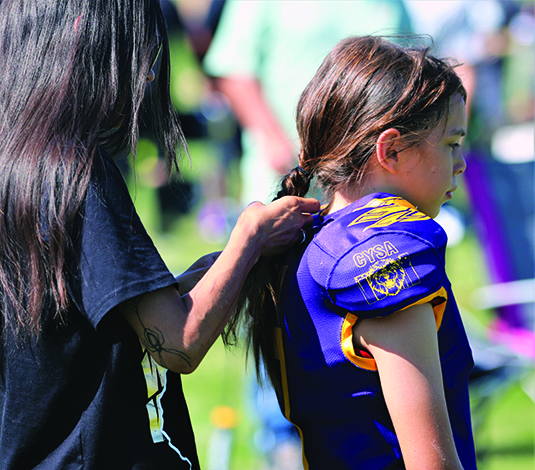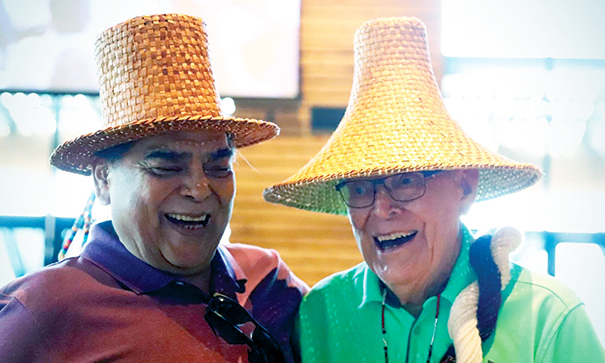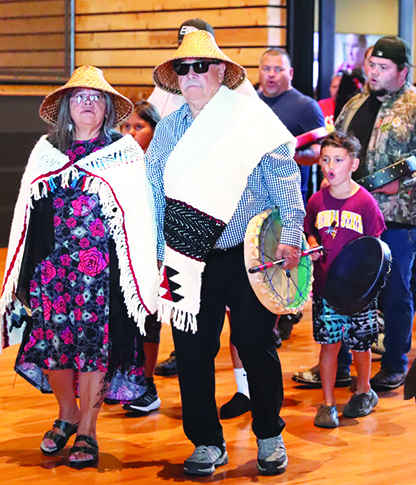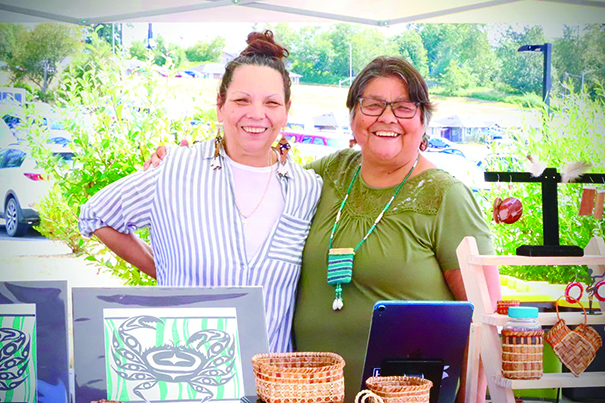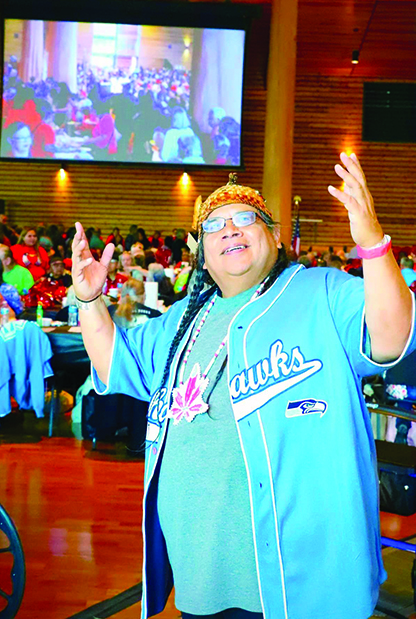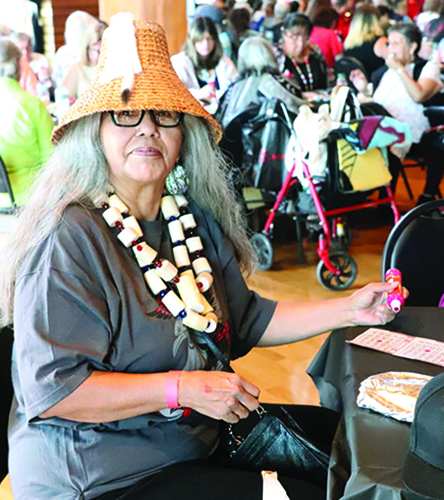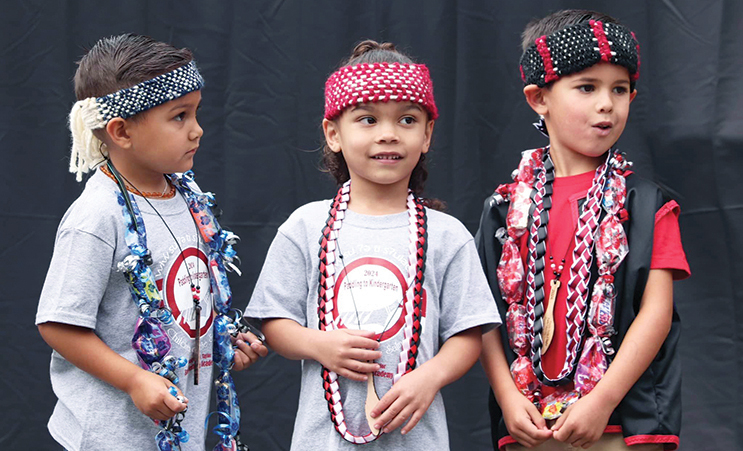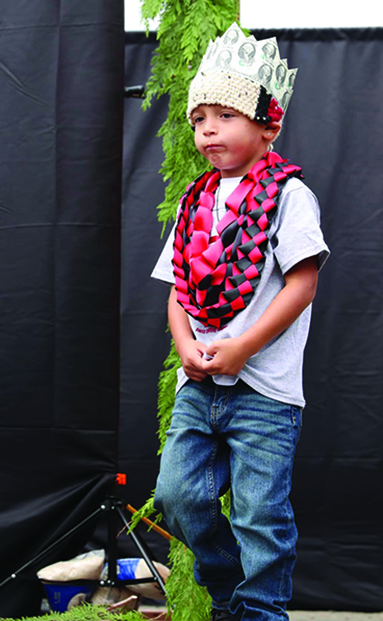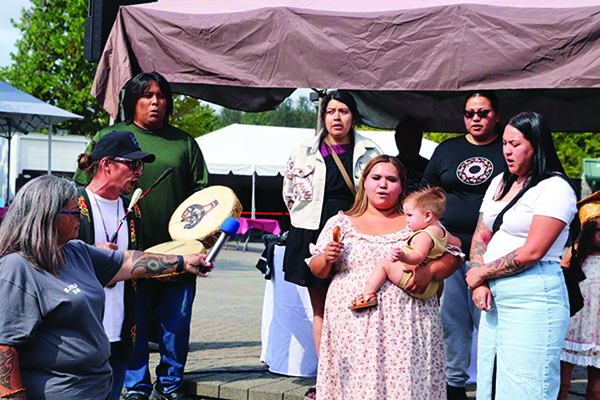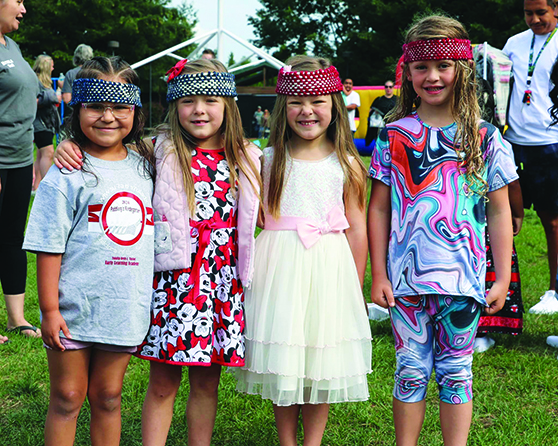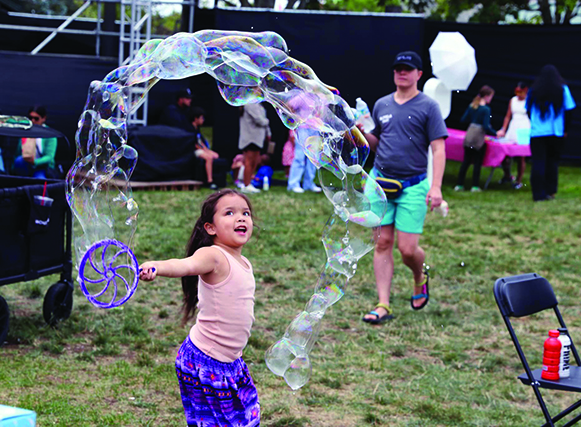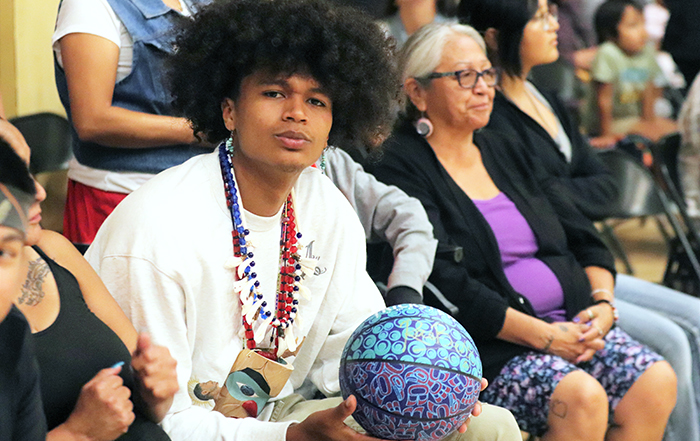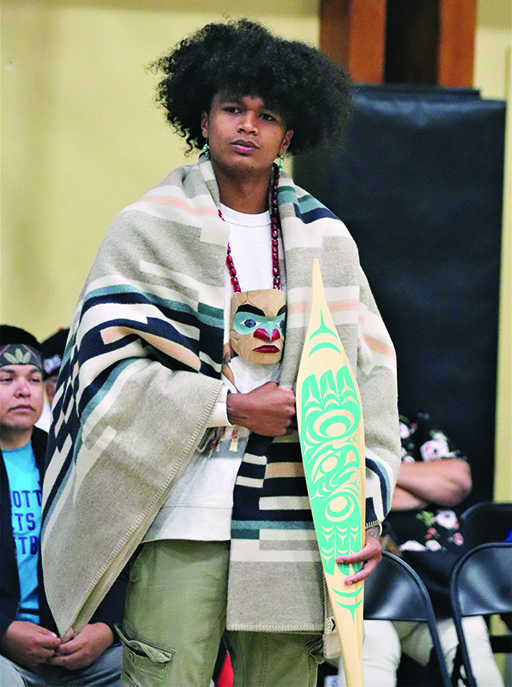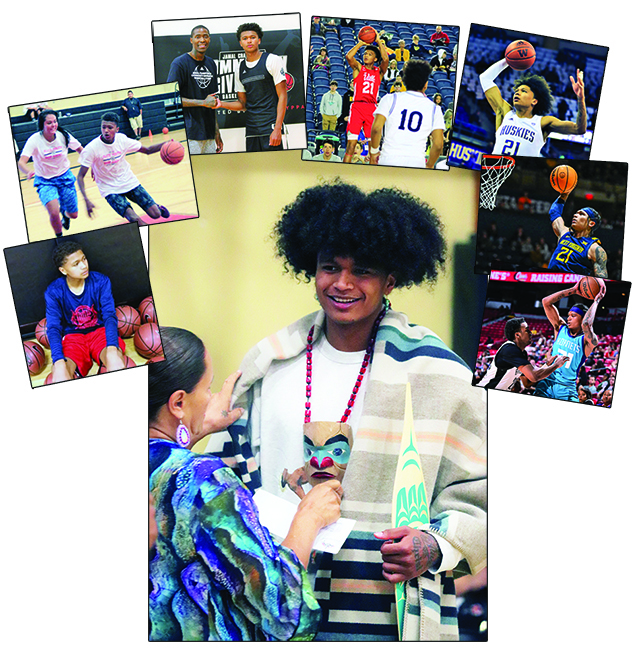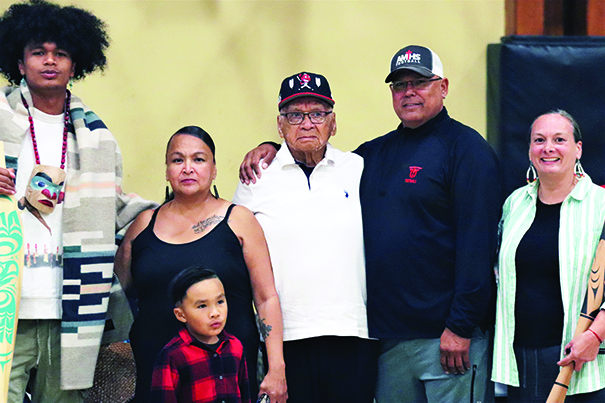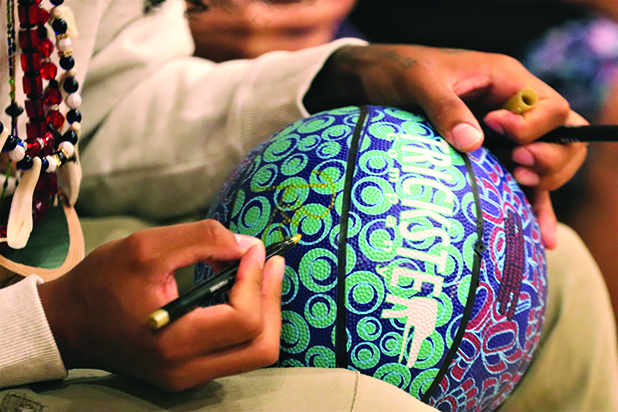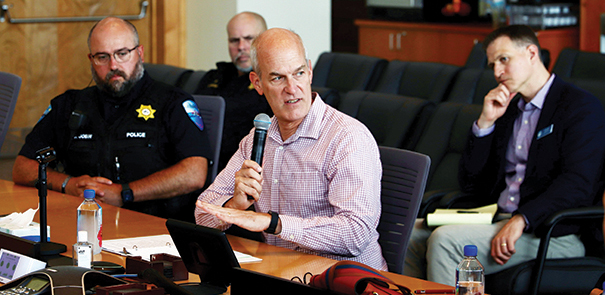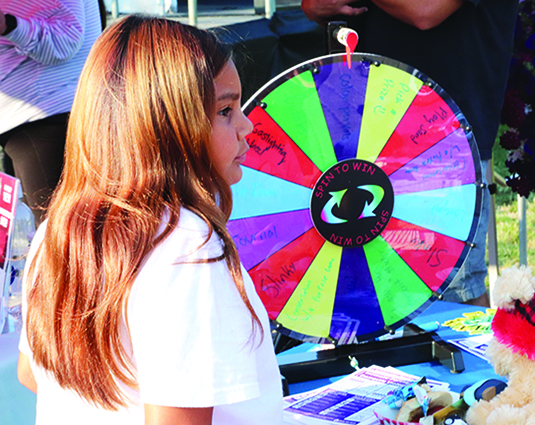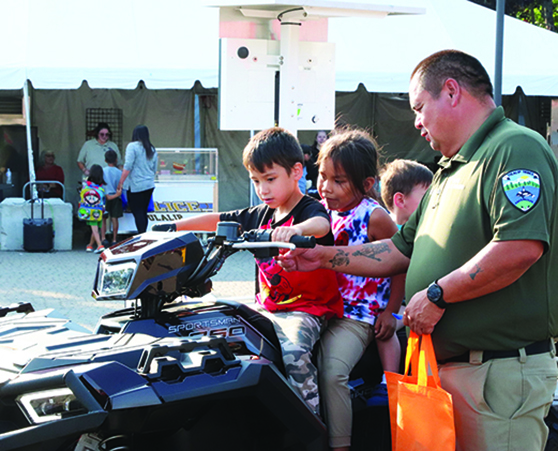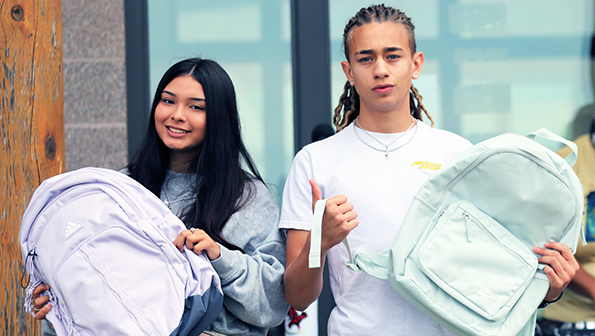
By Micheal Rios, Tulalip News
It’s been five long years since the Tribes’ annual back to school bash featured its iconic backpack giveaway. Missing since 2019, the double shoulder strap carry-all bags made a triumphant return on Wednesday, August 21, to the delight of students and parents, alike.

Anticipation was so high that several families lined up in front of the Youth Center doors a good two-and-a-half hours before the giveaway started. Misty Flores wanted to guarantee teenagers Caianne Santee, 17, and Skylar Flores,16, had first choice among the ever popular and extremely limited Skyn Style backpacks that feature stunning Native designs.
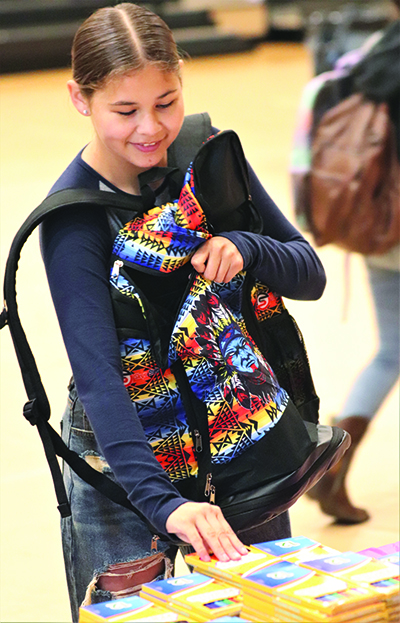
“It was important for us to be first in line so they could get the backpacks they wanted and so that I could get back to work,” said Misty.
“I’m excited to pick out a really cool backpack for school,” added Caianne. She stated so eloquently, like only a current teenager can, that the importance of having a cool backpack is “to avoid being made fun of for having a weird or lame backpack.”
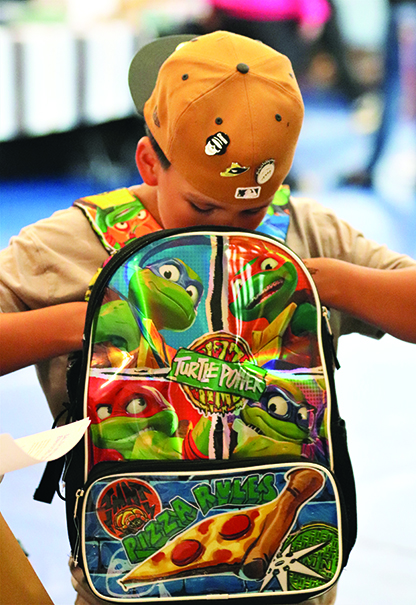
Skylar and Caianne accomplished their mission by both selecting Skyn Style backpacks. Skylar went with the subtle white and black tribal print design, while Caianne opted for the fearsome Warriors bag that features the portraits of Chief Joseph, Red Cloud, Geronimo, and Sitting Bull. Safe to say there’s nothing weird or lame about that backpack, that’s for sure.
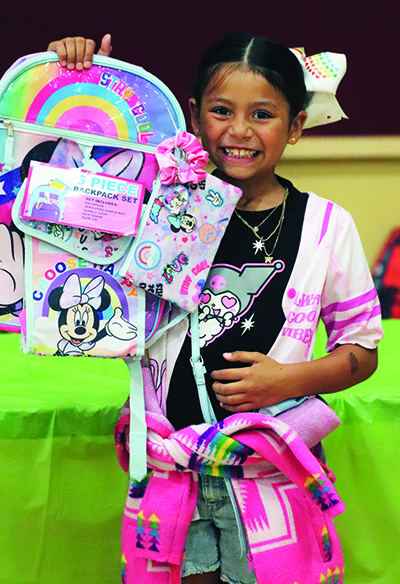
Also, among the first ones in the doors after eagerly standing in line for two plus hours was Valerie Alcombrack and her kiddos. Six-year-old Zaida Castaneda was so full of excitement that she couldn’t help but shout, “A pink one!” when asked what kind of backpack she was hoping for. Minutes later, the soon-to-be 1st grader was radiating pure princess energy as she sported a sparkly pink backpack out of the gymnasium. Her eight-year-old, big brother Kain opted for the base blue, Minecraft themed bag to rock during his upcoming 3rd grade year.
Hundreds of Tulalip students eagerly picked out a backpack before filling it with classroom supplies, like pens, pencils, spiral notebooks, folders and so much more. The deep-seeded commitment to the educational well-being and academic future of our youth went beyond essential school items.

In addition to the distribution of backpacks, the event also includes various activities and resources that promote academic and personal development. Educational booths, cultural presentations, and health screenings are often part of the event, providing a holistic approach to preparing students for the upcoming school year.
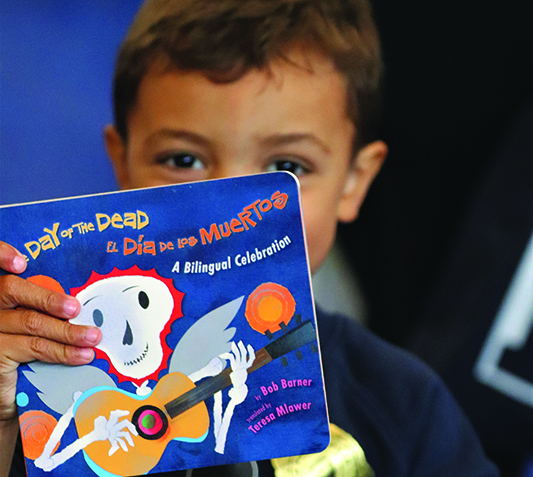
There were several resource booths on site with local school district staff, volunteers, and educators intent on boosting the confidence of students and parents as they transitioned into school mode. These resources help to address the broader needs of the youth, ensuring they are not only equipped with school supplies but also with knowledge and support that will help them thrive both in and out of the classroom.
“It’s just good to see all the support the kids have to motivate them in and out of the classroom. They know they have so many who want them to succeed and rally want them to move forward in the best way possible,” described papa bear Cory Pablo as he perused the resource tables with his kindergartener and 1st grader. “My kids have been talking about this backback day for like a week and a half. Now, they can’t wait to finish up in here so we can check out everything that waiting for them outside.”
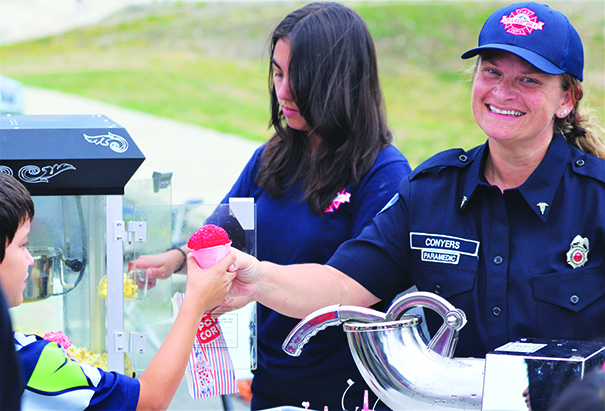

Oh, the marvels of being back outside. Like a scene out of Willy Wonka, there were free snow cones and popcorn being handed out by Tulalip Bay paramedics, literally a thousand slices of Costco pizza being distributed, and a variety of wildly fun shenanigans for the kids to enjoy. RECKLESS spinning carnival ride? Of course. Rock climbing wall? Sure. American gladiator style jousting? Why not.
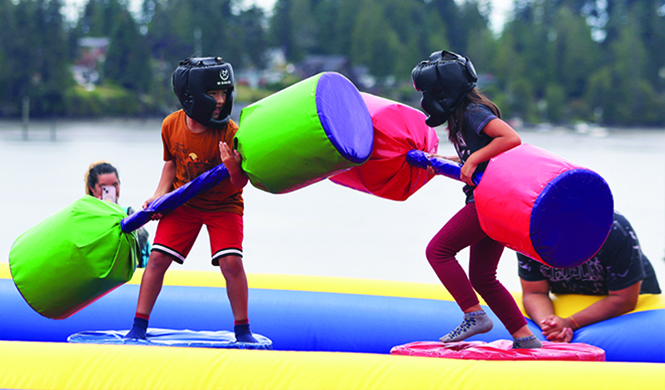
Peak memory making and community building to end the kid’s summer vacation, the return of the backpack distribution is also a reflection of the Tribes’ emphasis on unity and mutual support. The excitement around the event brings together not only the children and their families but also local leaders, educators, and community members to socialize in a whimsical atmosphere.
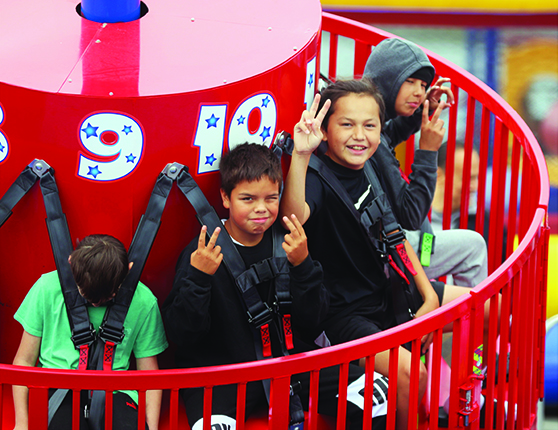
“We did so much outreach behind the scenes to make this as successful an event as possible,” reflected Jessica Bustad, Executive Director of Education. “This is a prime opportunity to reach our people because there are hundreds, potentially thousands, who walk through our doors today. A big priority for us was recruiting departments and organizations that we know our students and families need access to prior to school beginning so that they can, hopefully, begin building a relationship that they can then carry forward into the new year.
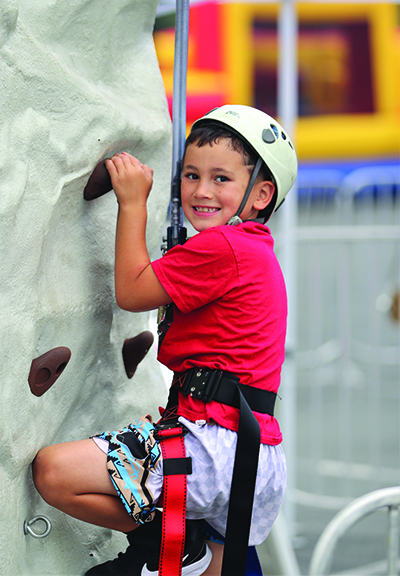
“As a parent, too, I’m so thankful for all the resources the Tribe makes available to our kids so they are in the best position to succeed,” she added. “Beyond the backpacks and school supplies, we know that as Tulalip families that our students are fully supported with their educational journeys.”



